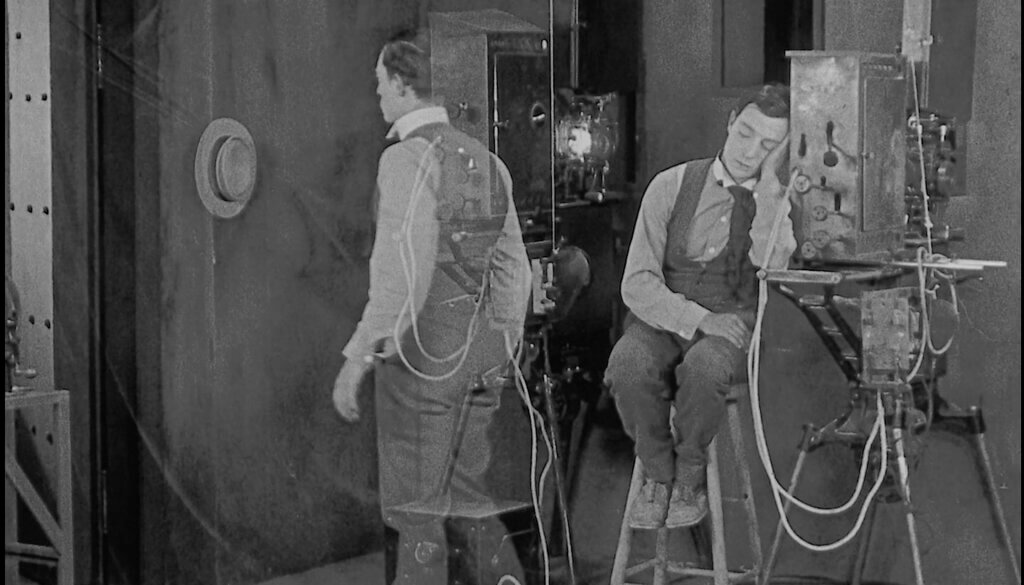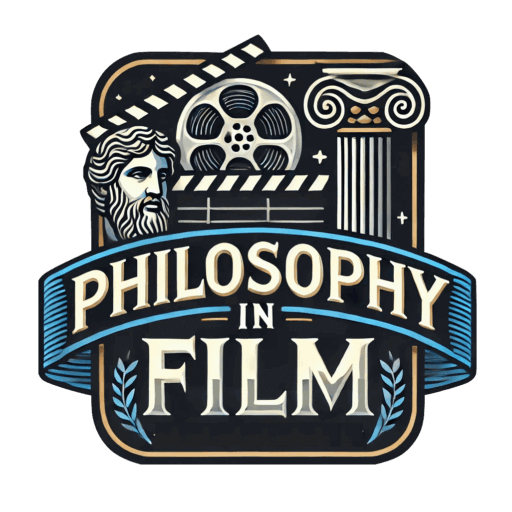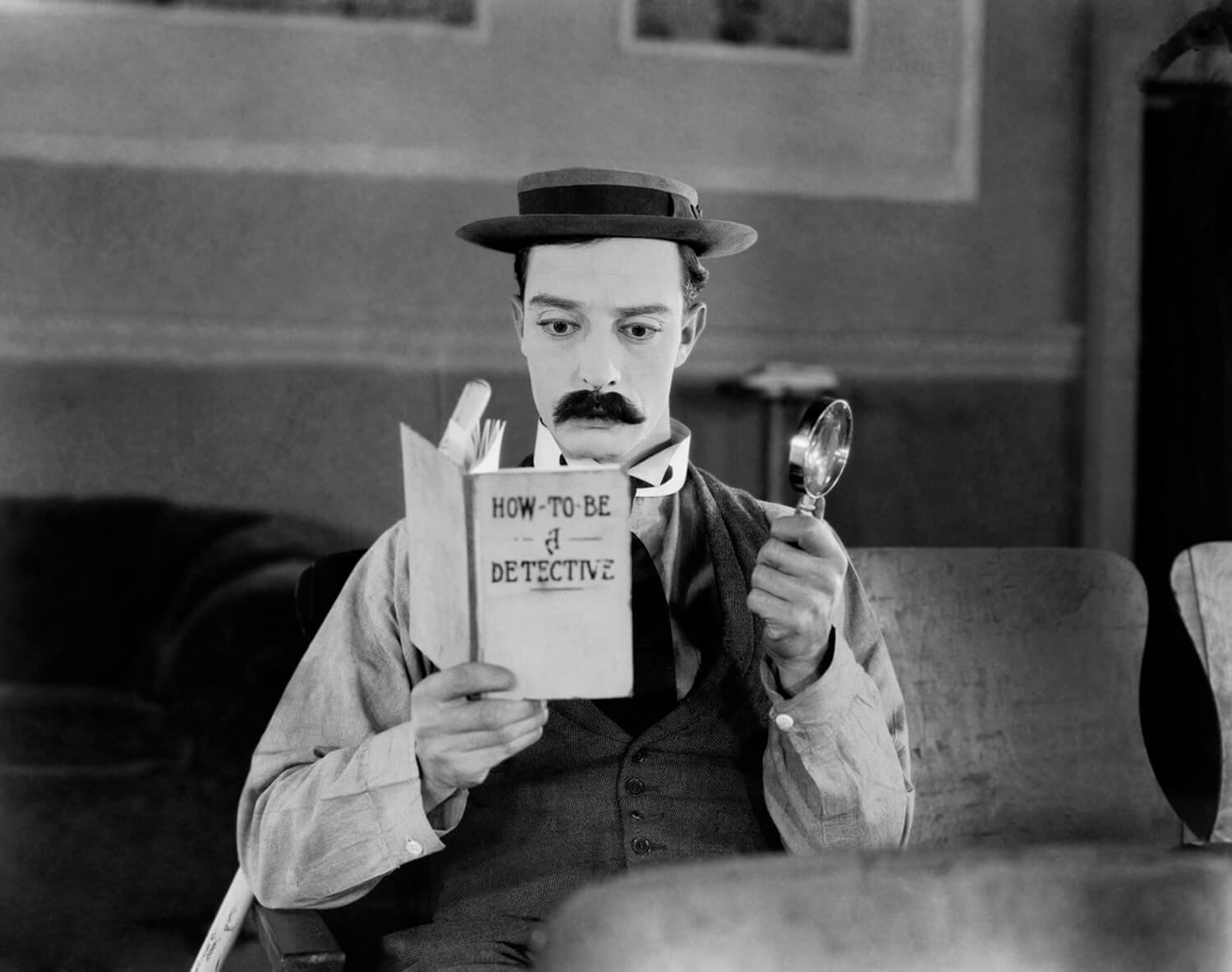Review: Sherlock Jr. (1924) ★★★★½
Silent films don’t usually tickle my fancy. We are so far removed from the “Golden Age” of silent filmmaking that the viewing experience can feel more like a history lesson than a good time. However, certain silent films transcend time and connect with people of all generations. In the case of Buster Keaton’s Sherlock Jr. (1924), a combination of timeless comedy and innovative filmmaking techniques prevents it from becoming a tedious slog for modern audiences.
Buster Keaton’s Sherlock Jr. stands alone as one of the most innovative comedies to come out of Hollywood’s silent era. Keaton stars as a down-on-his-luck movie projectionist who falls in love with a young woman. Unfortunately for Buster, he is cheated out of her affection by another man. He then falls asleep at his job and has a dream in which he walks straight into the movie being played in the theater. In this movie within a movie, he portrays a heroic (albeit comical) detective who must save the day in order to get the girl.
The film follows the Classical Hollywood style pretty closely, but it stands out among silent comedies for several reasons. First and foremost, Keaton made some experimental and highly innovative stylistic choices. One unique aspect of Sherlock Jr. is the extensive use of special effects to convey the main character’s dream. By superimposing a shot of Keaton standing up and leaving the room, he appears to leave his own body.
» You Might Like: Toto the Hero, the Antithesis to Classical Hollywood
Then, by seamlessly switching from stage performance to the actual film, Keaton can climb into the movie playing in the theater. He then finds himself thrust into different landscapes and scenarios with each new shot. Once in the dream world, Keaton uses various special effects (explosive billiard balls, trap doors, etc.) to create comically unrealistic situations.
One special thing that we (as modern viewers) get to experience watching silent movies is the level of ingenuity. These actors and filmmakers did not have the comforts of HD cameras, editing software, or special effects. Editing to make “special effects” was like magic for moviegoers. We take these kinds of things for granted nowadays.

Ingenious editing methods aside, Sherlock Jr. has an entertaining and surprisingly fresh story, especially for its time. Many early silent films were extremely simplistic. However, this is pretty understandable; it’s hard to tell a complex narrative when you can’t use words.
It’s even harder when you’re essentially creating filmmaking processes as you go. By putting Keaton in a film within a film, Sherlock Jr. predates most self-referential postmodern films by nearly a century. Without this kind of innovation, we would never have films like Pulp Fiction (1994), Scream (1996), Run Lola Run (1998), and many other lesser-known postmodern films.
» You Might Like: 10 Best Silent Films for Philosophy Students
In short, Sherlock Jr. is a very entertaining and engaging silent film. The humor aged well, and the special effects look outstanding for the time. It trumps Chaplin’s Easy Street in many ways, but primarily because it benefits from a larger budget and a more complex and engaging plot.
The ending is particularly memorable, as they employ a subtle sex joke in the last two shots, a very “risqué” decision for the time. Overall, Sherlock Jr. is a very well-made comedy that can still be readily enjoyed by modern audiences.
Sherlock Jr. Movie Rating: ★★★★½ out of 5
If you’d like to watch Sherlock Jr., it is currently available to rent, purchase, or stream via Amazon.
For more reviews like this one, check out the Philosophy in Film homepage!

